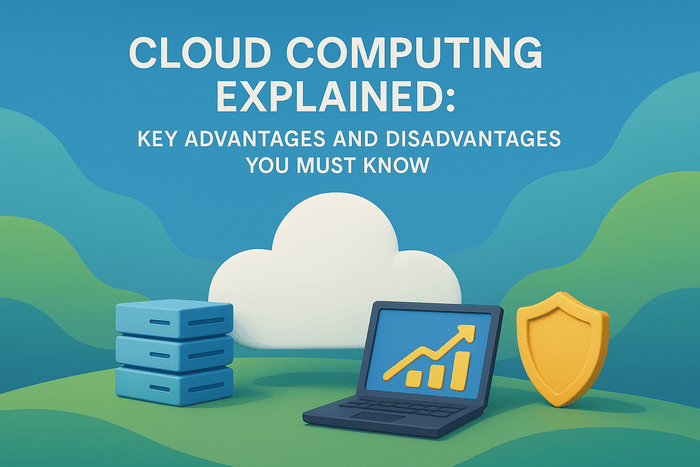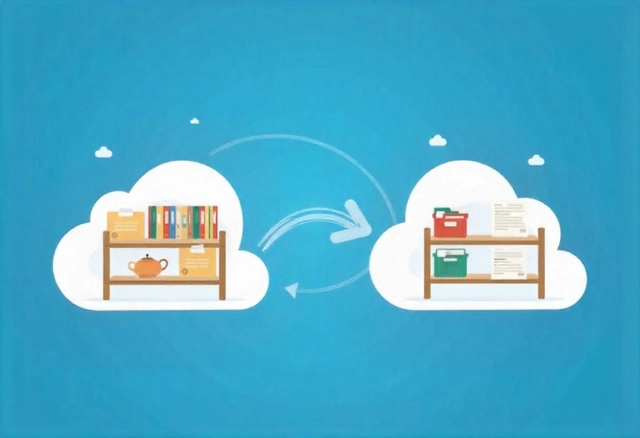In today’s fast-paced software development world, scalability, maintainability, and efficiency are critical.
The 12-Factor App methodology provides a set of best practices for building robust, scalable, and maintainable cloud-native applications.
Developed by engineers at Heroku, this methodology ensures that applications are designed for modern deployment environments.
This guide explores each of the 12 factors in detail, explaining how they contribute to better software development practices.
1. Codebase: One Codebase, Many Deploys
A single codebase tracked in version control, such as Git, to ensure consistency and reliability across all environments. This principle emphasizes that while an application may have multiple deployments—such as staging, production, or development environments—they all originate from the same repository. By maintaining a single source of truth, teams can avoid the pitfalls of code divergence, where different environments run different versions of the application, leading to inconsistencies and potential bugs. This approach also simplifies collaboration, as developers work from a unified codebase, and enhances traceability, as every change is logged in version control. Additionally, it streamlines the deployment process, enabling Continuous Integration/Continuous Deployment (CI/CD) pipelines to build, test, and deploy the application consistently across environments. Ultimately, a single codebase fosters reproducibility, scalability, and maintainability, which are essential for modern, cloud-native applications.
2. Dependencies
The principle of explicitly declaring and isolating dependencies is a cornerstone of the 12-Factor App methodology, ensuring that applications remain portable, consistent, and free from dependency conflicts. Rather than relying on globally installed libraries or tools, which can vary across systems, all dependencies must be explicitly declared in a dependency management file, such as package.json for Node.js, requirements.txt for Python, or pom.xml for Java. These files serve as a manifest, listing every library, framework, or tool the application requires to function. By isolating dependencies within the application’s environment—using tools like virtual environments, containers, or dependency managers—developers can ensure that the application runs consistently across different systems, from a developer’s local machine to production servers. This approach not only simplifies onboarding for new developers but also eliminates the “it works on my machine” problem, making deployments more reliable and reducing the risk of runtime errors caused by missing or mismatched dependencies. Ultimately, explicit dependency management fosters reproducibility, scalability, and maintainability, which are critical for modern, cloud-native applications.
3. Config
Storing configuration settings, such as API keys, database credentials, and other sensitive information, in environment variables rather than in the codebase is a best practice in modern software development. This approach enhances security by preventing the accidental exposure of sensitive data in version control systems like Git, where hardcoded secrets could be accessed by unauthorized users. Additionally, using environment variables makes configuration more flexible and scalable, allowing teams to modify settings without altering the codebase or redeploying the application. This is particularly useful in cloud-native and containerized environments, where configuration can differ between development, testing, and production environments. Many platforms, such as Docker, Kubernetes, and serverless frameworks, provide built-in support for managing environment variables, ensuring a secure and maintainable way to handle application configurations.
4. Backing Services
One of the key ideas in the 12-Factor App methodology is treating backing services (like databases, message queues, or third-party APIs) as separate, replaceable resources rather than tightly connecting them to the application. Instead of writing their details directly into the code, applications should use configuration settings, such as URLs and credentials stored in environment variables. This makes it easier to swap or upgrade services without changing the code—for example, switching from a local MySQL database to a cloud-based PostgreSQL instance. This approach also helps applications run smoothly in different environments, like development, testing, or production, without needing modifications. Additionally, since these services are managed separately, they can be updated, scaled, or replaced without affecting the application. By keeping backing services flexible and independent, applications become easier to manage, more scalable, and better suited for modern cloud-based systems.
5. Build, Release, Run
The principle of strictly separating build, release, and run stages is a critical aspect of the 12-Factor App methodology, ensuring a clear and consistent workflow for deploying applications. During the build stage, the source code is compiled, dependencies are installed, and assets are bundled into an executable artifact, such as a container image or a packaged binary. The release stage takes this artifact and combines it with environment-specific configurations, such as database credentials or API keys, to create a fully configured, immutable release that is ready for deployment. Finally, the run stage executes this release in the target environment, whether it’s a local development server, a staging environment, or production. By strictly separating these stages, teams can ensure that the same build artifact is consistently deployed across all environments, reducing the risk of discrepancies and errors. This separation also enhances rollback capabilities, as each release is immutable and can be easily reverted to a previous version if issues arise. Overall, this approach promotes reliability, reproducibility, and scalability, making it a cornerstone of modern, cloud-native application development.
6. Processes
The concept of running applications as stateless processes is a key principle of the 12-Factor App methodology, promoting scalability, resilience, and simplicity in modern software architecture. In a stateless design, the application does not retain session data or user-specific information locally. Instead, all persistent data, such as user sessions or application state, is stored in external services like databases (e.g., PostgreSQL, MySQL) or distributed caches (e.g., Redis). This ensures that any instance of the application can handle requests independently, without relying on locally stored data. The stateless approach facilitates horizontal scaling, making it easy to add or remove instances based on demand without disrupting operations. It also simplifies deployment and failure recovery, as new instances can be spun up or replaced without data loss. In cloud-native environments, this design allows applications to dynamically scale up or down, optimizing resource utilization and ensuring high availability. Ultimately, adopting stateless processes enhances flexibility, reliability, and scalability, making it a foundational principle of modern distributed systems.
7. Port Binding
In the 12-Factor App methodology, applications should be self-contained and expose their services using port binding rather than relying on external web servers like Apache or Nginx. This means the application itself is responsible for handling HTTP requests, listening on a specific port, and serving responses. Frameworks like Express (for Node.js), Spring Boot (for Java), and Flask (for Python) allow developers to build applications that bind directly to a port and manage incoming requests. This approach makes deployment more flexible, as the application does not depend on a pre-configured server environment. It also improves portability, allowing the same application to run in different environments (development, staging, production) without changes. Additionally, this enables better scalability, as multiple instances of the application can be spun up independently and managed by load balancers. By following this principle, applications become modular, easier to deploy, and well-suited for cloud-native architectures like Docker and Kubernetes.
8. Concurrency
The 12-Factor App methodology advocates for scaling applications by deploying multiple lightweight, stateless processes instead of relying on a monolithic, multi-threaded architecture. Rather than increasing threads within a single process to handle higher traffic, applications should create multiple independent instances that can be distributed across the infrastructure. This approach enables efficient load balancing, as traffic can be evenly spread across instances using orchestration tools like Kubernetes, Docker Swarm, or cloud auto-scaling services. It also improves fault tolerance, as the failure of one process does not affect others, minimizing downtime and simplifying recovery. Stateless processes can be dynamically scaled up or down to match demand, ensuring efficient resource use and cost-effectiveness. This strategy is especially beneficial in cloud-native environments, where applications need to adapt to fluctuating workloads while maintaining reliability and performance.
9. Disposability
The principle of maximizing robustness with fast startup and graceful shutdown is essential for building reliable and scalable applications, as emphasized in the 12-Factor App methodology. Processes should be designed to start quickly, minimizing downtime during deployments or scaling events, and to shut down gracefully, ensuring that all resources are properly released and ongoing tasks are completed before termination. This involves handling system signals like SIGTERM to initiate a controlled shutdown, allowing the application to finish active requests, close database connections, and clean up temporary files. By ensuring fast startup times, applications can rapidly scale up to meet increased demand or recover from failures, while graceful shutdowns prevent data corruption, resource leaks, or abrupt failures that could disrupt users. Together, these practices enhance the application’s resilience, enabling seamless scaling, rolling updates, and high availability in dynamic, cloud-native environments. This approach is particularly critical in distributed systems, where processes are frequently started, stopped, or replaced to adapt to changing workloads.
10. Dev/Prod Parity
One of the core principles of the 12-Factor App methodology is ensuring that development, staging, and production environments remain as similar as possible to prevent unexpected deployment issues. When all environments use the same databases, dependencies, and configurations, potential problems can be identified and fixed early in the development process. This practice helps avoid the common “it works on my machine” issue, where software behaves differently in production due to inconsistencies in tools, libraries, or infrastructure. For instance, a developer working with SQLite locally while production relies on PostgreSQL may encounter database-specific bugs that only appear after deployment. By keeping environments consistent, teams benefit from smoother deployments, quicker troubleshooting, and increased confidence in application stability. This approach is particularly valuable in cloud-native development, where frequent updates and reliable deployments are crucial for maintaining high-quality software.
11. Logs
In a 12-Factor App, logs should be treated as continuous event streams rather than being written to static log files. Instead of storing logs locally, applications should send them directly to standard output (stdout), where a centralized logging system can collect, process, and analyze them. Tools like the ELK Stack (Elasticsearch, Logstash, and Kibana), Datadog, or Loki can aggregate logs from multiple application instances, making it easier to monitor system health, debug issues, and analyze trends in real-time. This approach ensures that logs are not lost when containers restart or instances scale dynamically. By decoupling log storage from the application, developers can access and analyze logs efficiently across multiple environments (development, staging, and production), improving observability, troubleshooting, and performance monitoring.
12. Admin Processes
The principle of running admin/management tasks as one-off processes is a vital aspect of the 12-Factor App methodology, ensuring that administrative operations do not disrupt the main application workflow.
Tasks such as database migrations, backups, or batch jobs should be executed as separate, short-lived processes rather than being integrated into the application’s runtime.
This separation prevents these tasks from consuming resources or causing delays in the application’s primary functions, which could impact performance or user experience. For example, running a database migration as a one-off process ensures that it completes independently of the application’s request-handling cycle, reducing the risk of downtime or conflicts.
By isolating administrative tasks, teams can maintain operational efficiency, simplify debugging, and ensure that the application remains responsive and scalable. This approach is particularly important in cloud-native environments, where applications must handle dynamic workloads and frequent updates without compromising reliability.
Conclusion
The 12-Factor App methodology is a best-practice framework for developing modern, scalable, and maintainable applications. By following these principles, teams can build resilient applications that thrive in cloud environments.
This is an expanded version of the official: https://12factor.net/







